Campus Life Through the Archives: SU Student Publications Collection
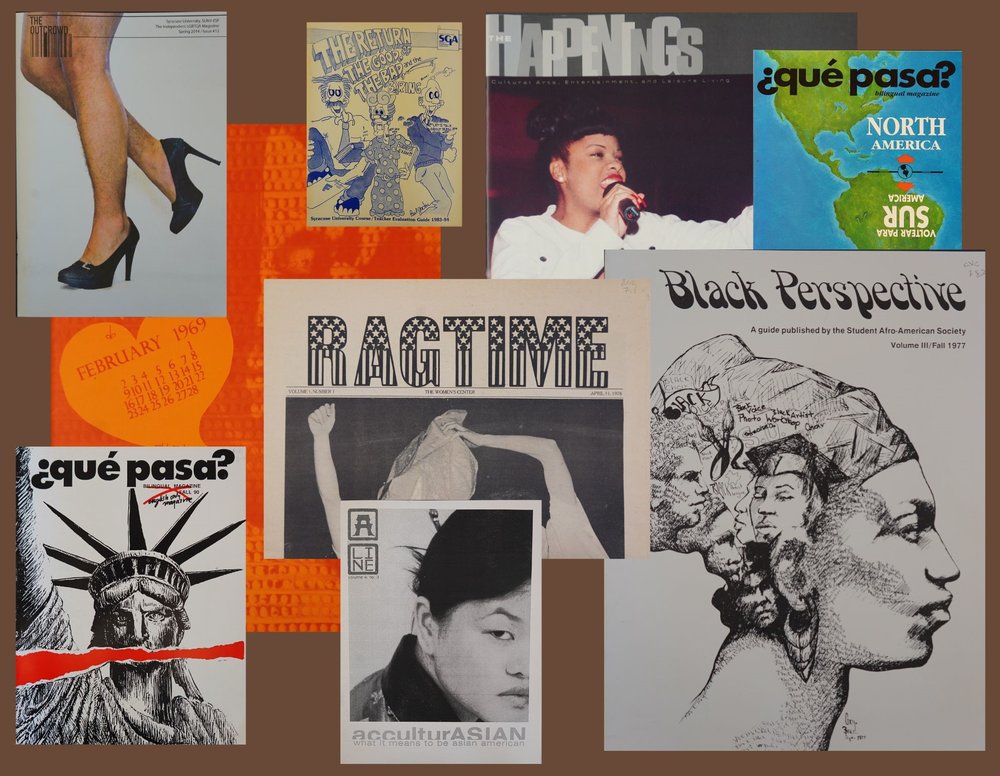
by Iman Jamison G’ 26, School of Information Studies, and SCRC Graduate Instructional Assistant
I find that the joy of college lies in the diversity of art, culture, and thought produced by its students. Whether it's Instagram "fits" or student and faculty-led protests, the Syracuse campus community has historically fostered free expression, despite any obstacles. Through the collections within SCRC, one can see diverse expression materialized in the artifacts of student life; in particular, the Syracuse University Student Publications Collection! Spanning from 1872 to 2024, this collection holds hundreds of magazines, newspapers, newsletters, and zines representing student life at Syracuse for the past 152 years. Here are some of my favorite publications that encapsulate our campus community!
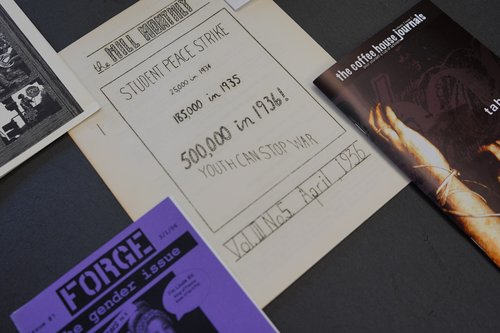
Covers of activism-centered publications, including issues of The Hill Monthly, The Coffee House Journals, and Forge.
Activism has long been at the forefront of campus culture at Syracuse University. Historically, movements such as the 1970 Student Strike or more recently, the #NotAgainSU student movement, have been integral to producing change relating to racism, sexism, and anti-war sentiments. In the publications collection, we hold materials such as Hill Monthly. Published in the 1930s as a “peaceful digest”, Hill Monthly produced articles and many calls-to-action for students to get involved in campus peace strikes and demonstrations against the war system perpetuated by the University.
Another great example of an activist publication would be The Coffee House Journals, a small feminist zine produced to educate students on radical and political and activism related resources and organizations. Their slogan, “Pour Yourself a Cup of Activism,” brings a motivating spirit to those wanting to get involved in important matters on and off campus. These are just a few examples in the publications collection, but posters, fliers, and articles exist across many SCRC holdings that highlight a culture of activism on campus.

Alteracts’ service-oriented publications Survival in Syracuse and Gimme Shelter, and SGA’s The Good, the Bad, and the Ugly served as guides to living in Syracuse, both on campus and in the community.
Another strong component of campus culture is student government and service-centered organizations that have existed since 1878! Student governments such as the Student Government Association (SGA) and the Graduate Student Organization (GSO) have supported students through funding, resources, and representation since the early days of Syracuse University. One such example would be the Alternative Action Service, or Alteracts, a student service organization partially funded by SGA and the GSO. Alteracts aided SU students in educational and financial resources, best spots for food and groceries, off-campus housing (Gimme Shelter), and more during the 1970s and 80s.
My favorite service-centered publication is The Good, the Bad, and the Ugly. What can be seen as a precursor to Rate My Professor, this University Course and Teacher Evaluation Guide details favorite classes and professors in every department on campus at the time, from biology to art history. The Alteracts and general service-oriented publications represent the support student governing bodies have given to their fellow students and the campus community.
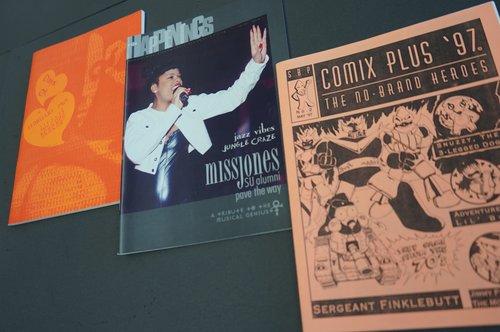
(Left to right) Days of February, The Happenings [in Black Entertainment], and Comix Plus highlight artful student expression.
Music, art, and the literary arts are also deeply integral to SU history and can be seen through many publications. Comix plus was a student comic book publication originally published in the mid-1990s. The publication included cartoon art, science fiction art and fantasy art produced by a multitude of students.
Another publication that highlighted student art was the Days of February literary magazine, first published in 1969 by Meade Publications, a non-profit student organization that, through donations and advertising, self-funded their dream magazine as a “medium of expression for all Syracuse University creative talents.” Each poem, photograph, and piece of artwork within the publication is done by and for Syracuse students and truly shows the significance of highlighting the visual and literary arts through diverse publications.
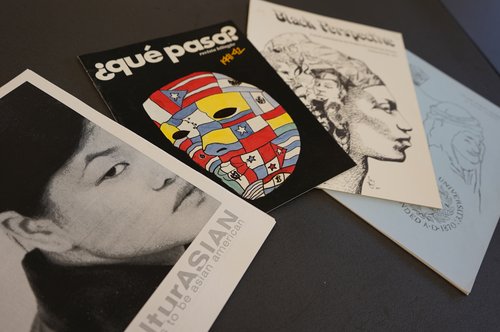
(Left to right) A-line, ¿Que Pasa?, Black Perspectives, and the Arab Newsletter are some BIPOC student publications present in the collection.
Diversity of publications also represents our diverse demographic at Syracuse with publications from the Student African American Society such as Black Perspectives, an “alternative resource for, by, and with Black students in mind.” With the purpose of welcoming “incoming freshman… to the academic and/or environmental adjustments” that they might face. Black Perspectives acted as a handbook on student organizations, Greek life, recommended classes, and the growing Black community at Syracuse University. There are also materials published by and for Asian American students and Arab students on campus such as A-Line and the Arab Newsletter.
Another publication I’d like to highlight is called ¿Que Pasa? Founded in 1971 by La Casa Latinoamericana, a student organization for Latin American and Hispanic students, ¿Que Pasa? was the first and only bilingual magazine at Syracuse University, highlighting Latin American culture, politics, and Syracuse events.
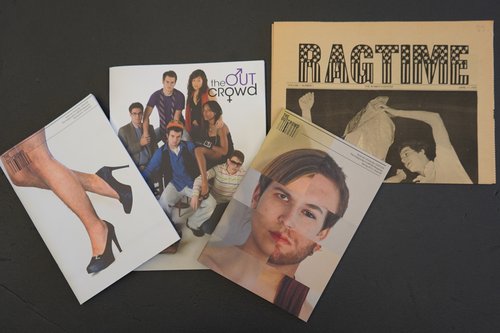
(Left to right) Three editions of the student publication The Outcrowd and the student publication Ragtime.
Many other marginalized groups have contributed to the diversity of publications in SU history. One example is the student newspaper Ragtime, a publication produced by The Women’s Center, a student organization dedicated to discussing issues affecting women on campus. Published twice a week, this publication highlighted women-centered news stories on student, staff, and faculty issues.
Another wonderful example is the LGBTQIA+ publication The Outcrowd, the first and only LGBTQIA+ student publication at Syracuse University. Starting in 2004, The Outcrowd acted as a space for queer students to express opinions and perspective on popular culture, art, sex, and current social issues.
Each publication I’ve highlighted adds to the vibrant and expansive nature of student life that has existed at Syracuse throughout its history and the community that continues today. As the semester begins, I urge everyone to immerse themselves in the campus culture that has been grown by students before us and through all outlets, physical and digital, express happiness, outrage, art, and community.
